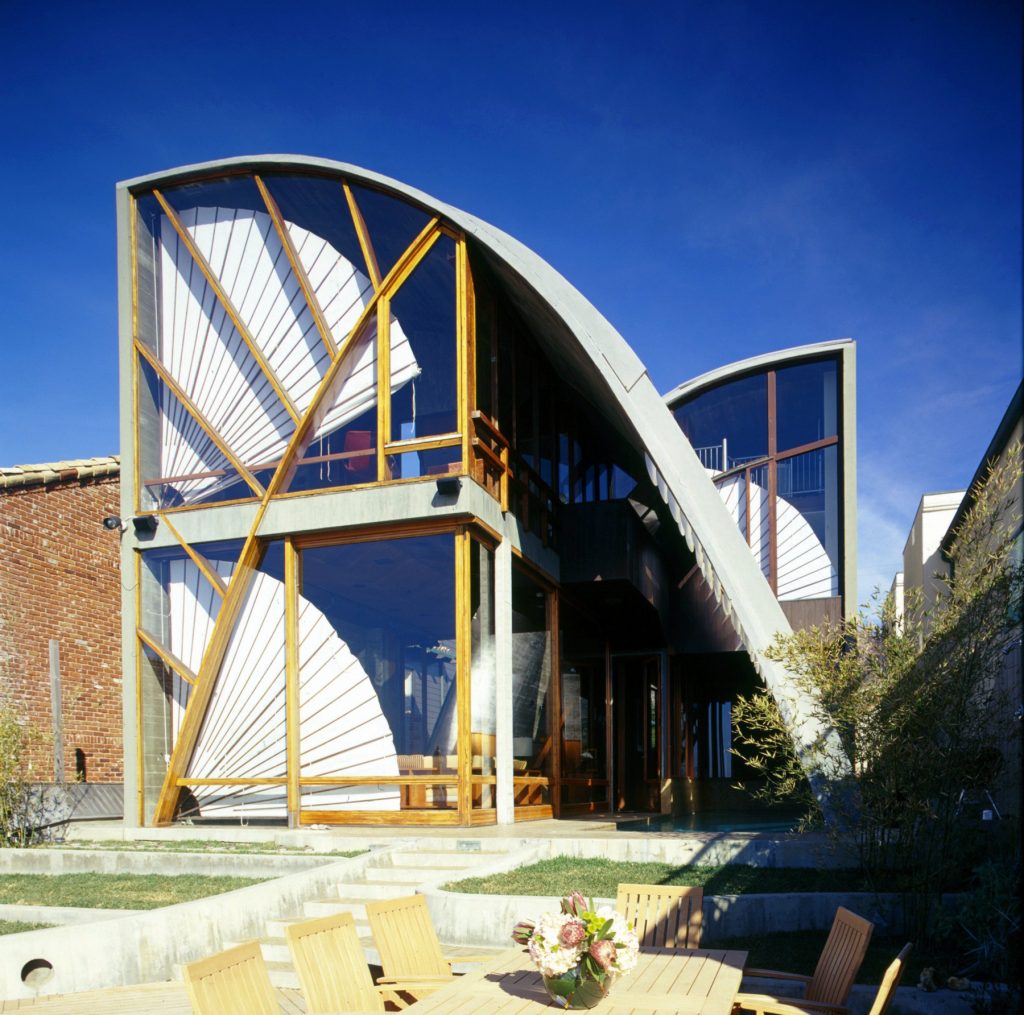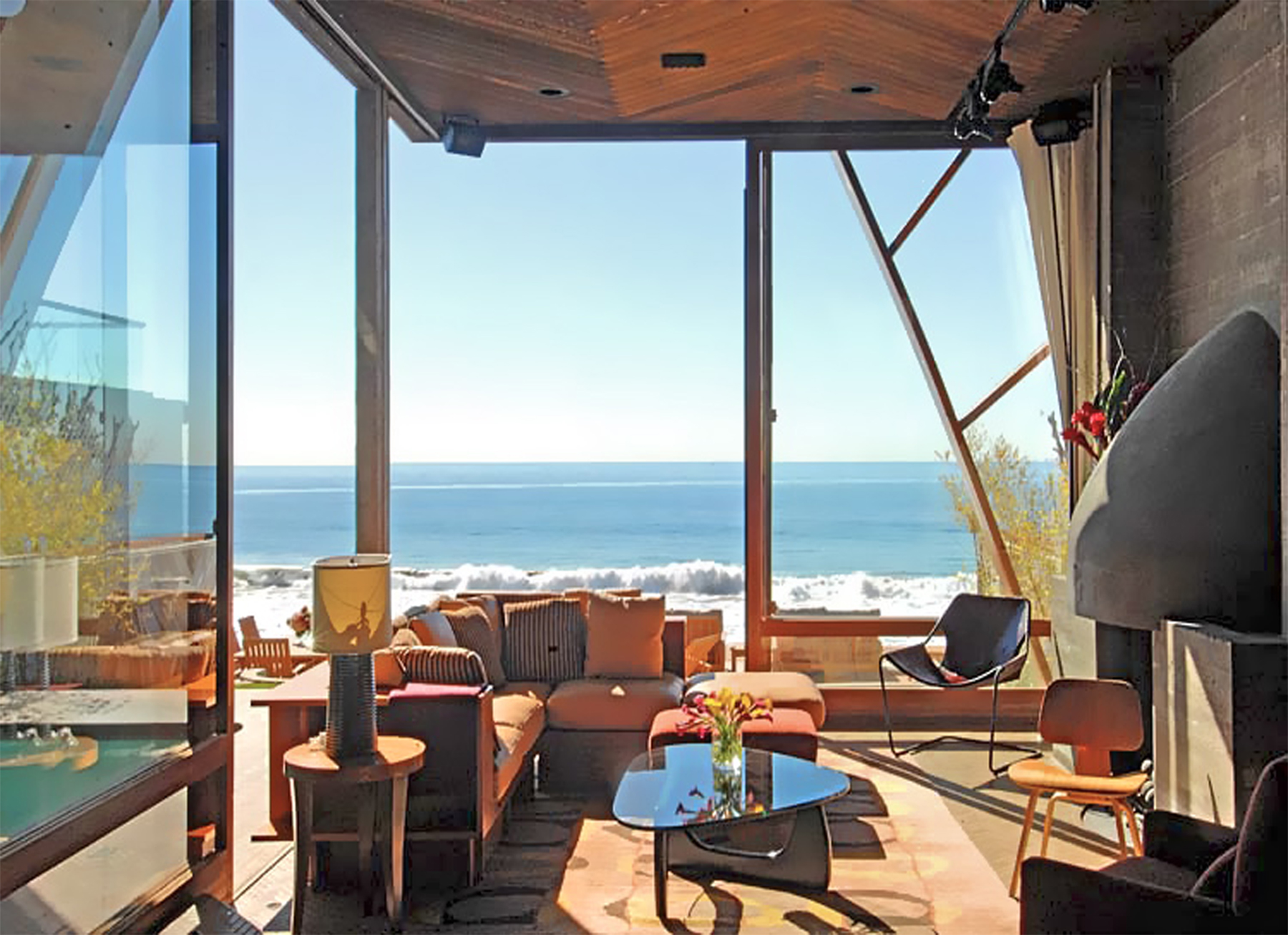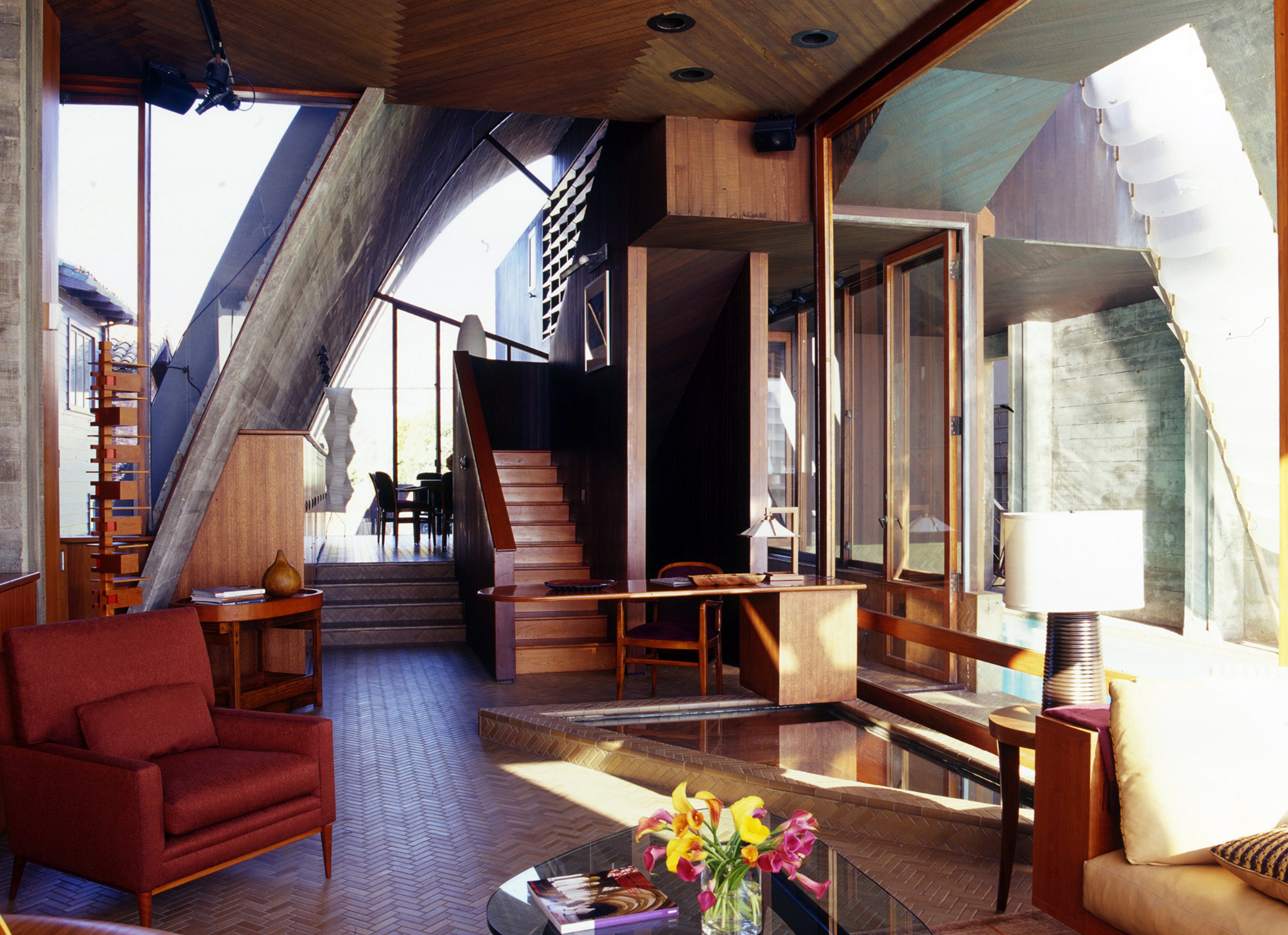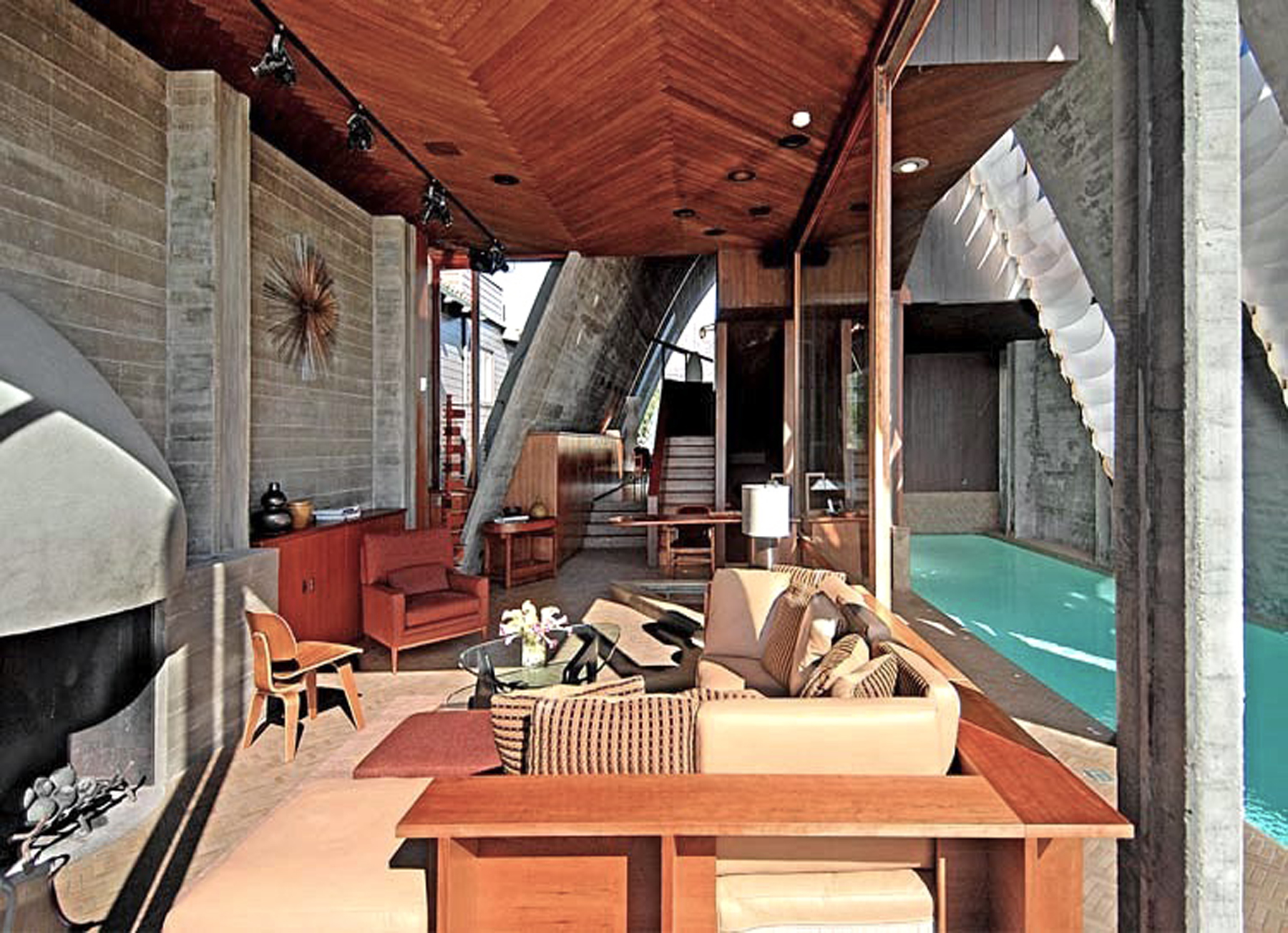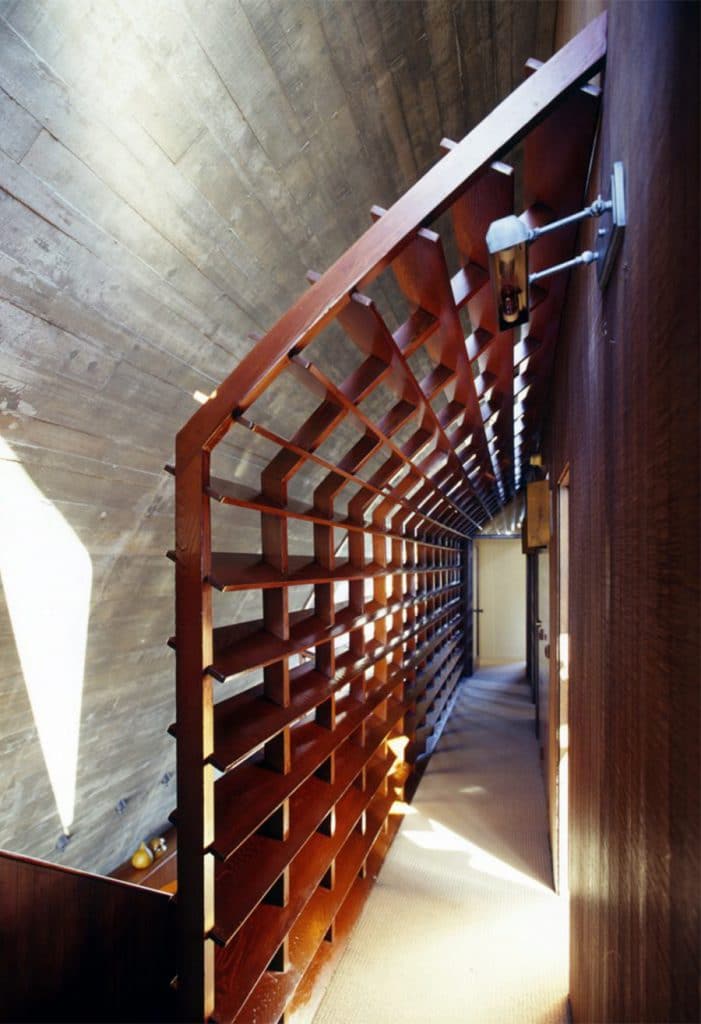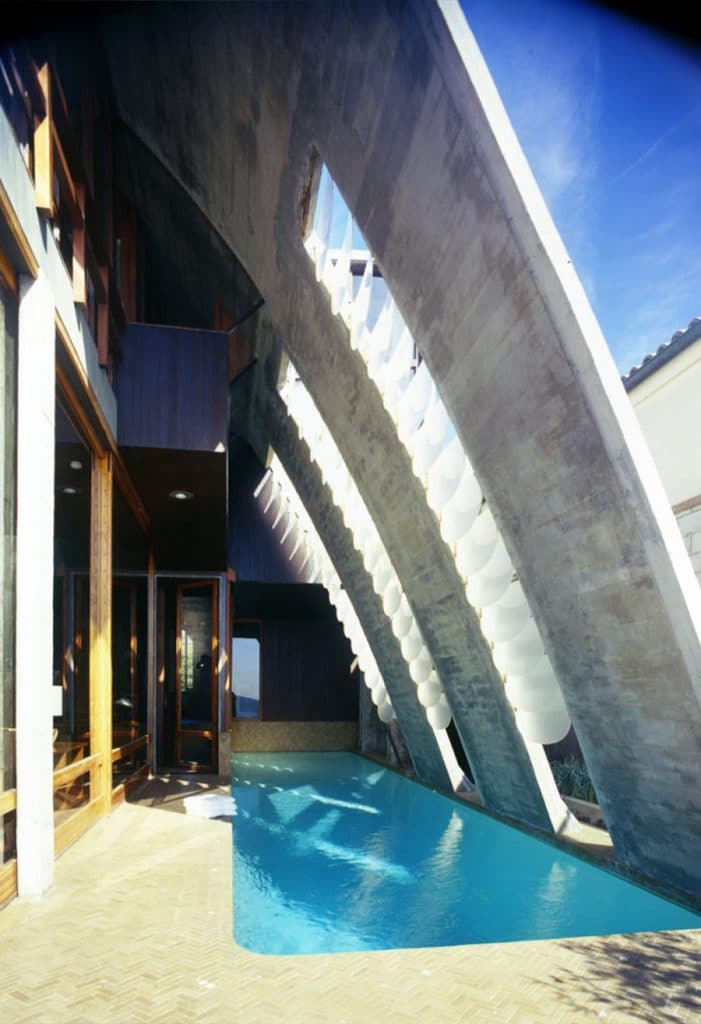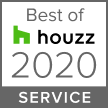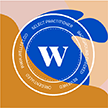Mid-Century Modern
Wolff House Hedges Place
Architect: John Lautner – 1963
Location: West Hollywood, CA
Legendary architect, John Lautner built this geometrically complex, museum-quality icon with spatial drama yet without sacrificing sanctuary for its occupants. He always stated his primary objective was the continual search to answer basic human needs, emotional as well as physical, in shelter. Kristin Kilmer has always followed this philosophy herself, believing that our outer world is a direct reflection of our inner world. If one’s home environment is in chaos, one cannot live peacefully. The interiors, for her client were designed in the spirit of John Lautner’s paradoxical vision of juxtaposing nature with sharp architectural lines. Kristin incorporated sculptural forms with natural materials such as cork fabric, and reflected the spiral, cantilevered staircase by “upcycling” a vintage, curvilinear sofa with eco-wool and adding a cantilevered bookcase. The color palette is carefully muted to complement the stone from the San Gabriel Mountains. All artwork was selected from local artists to support and recycle into the local community. Among her favorites is Miguel Osuna’s LA freeway painting Despeque above the dining table as it further reinforces this city’s paradoxical spirit. Its subtle hues and softness almost fool the eye as if the context was a natural landscape.
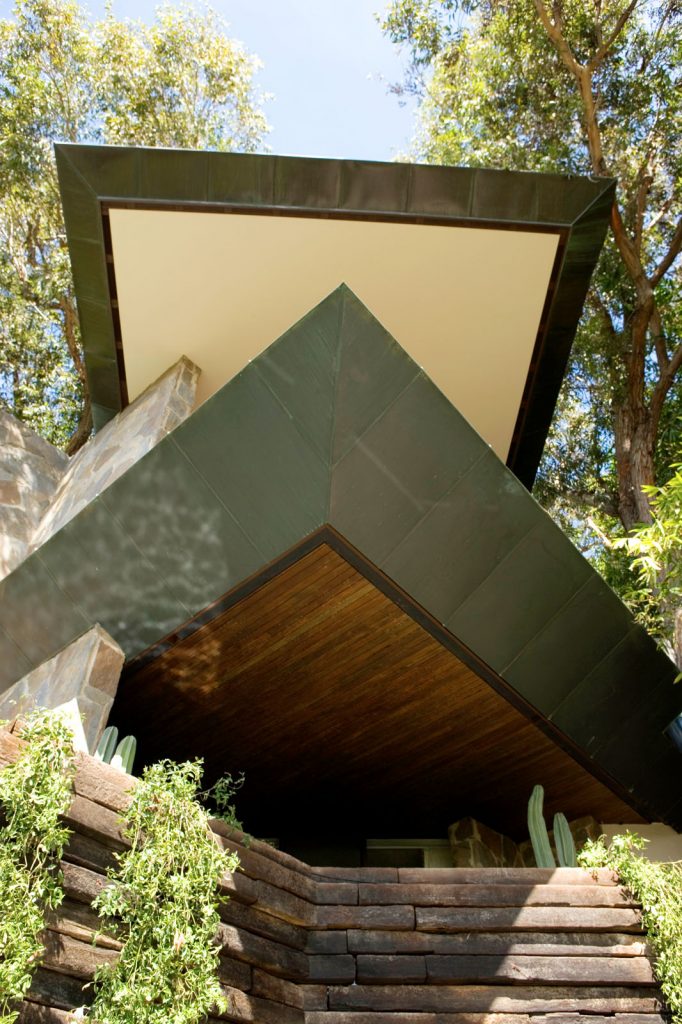

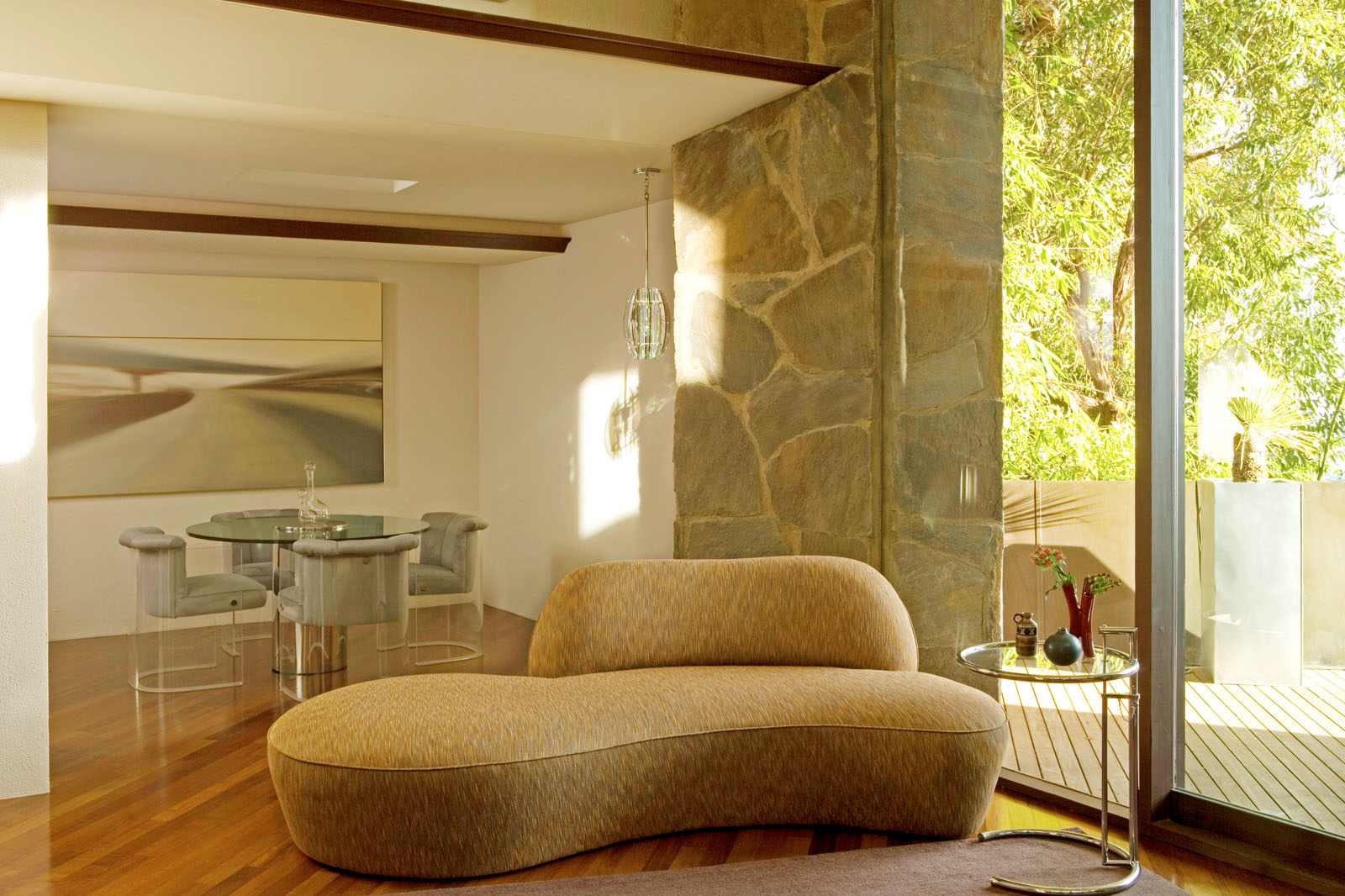
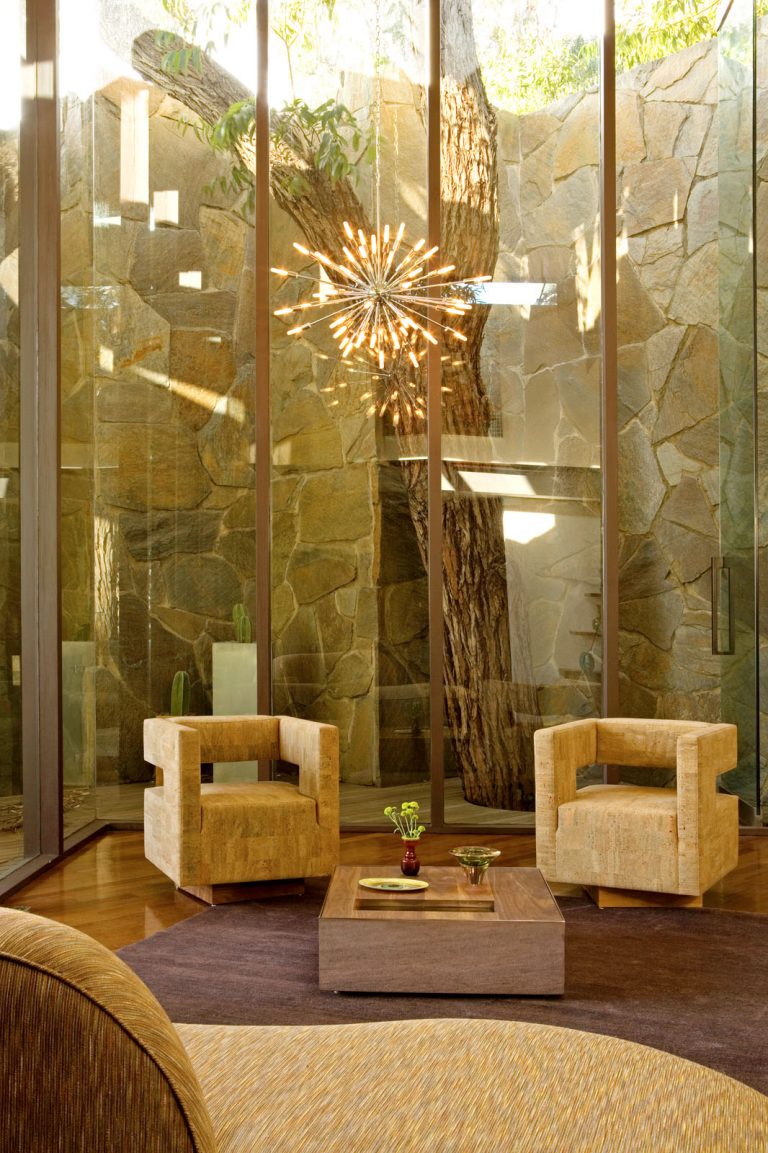
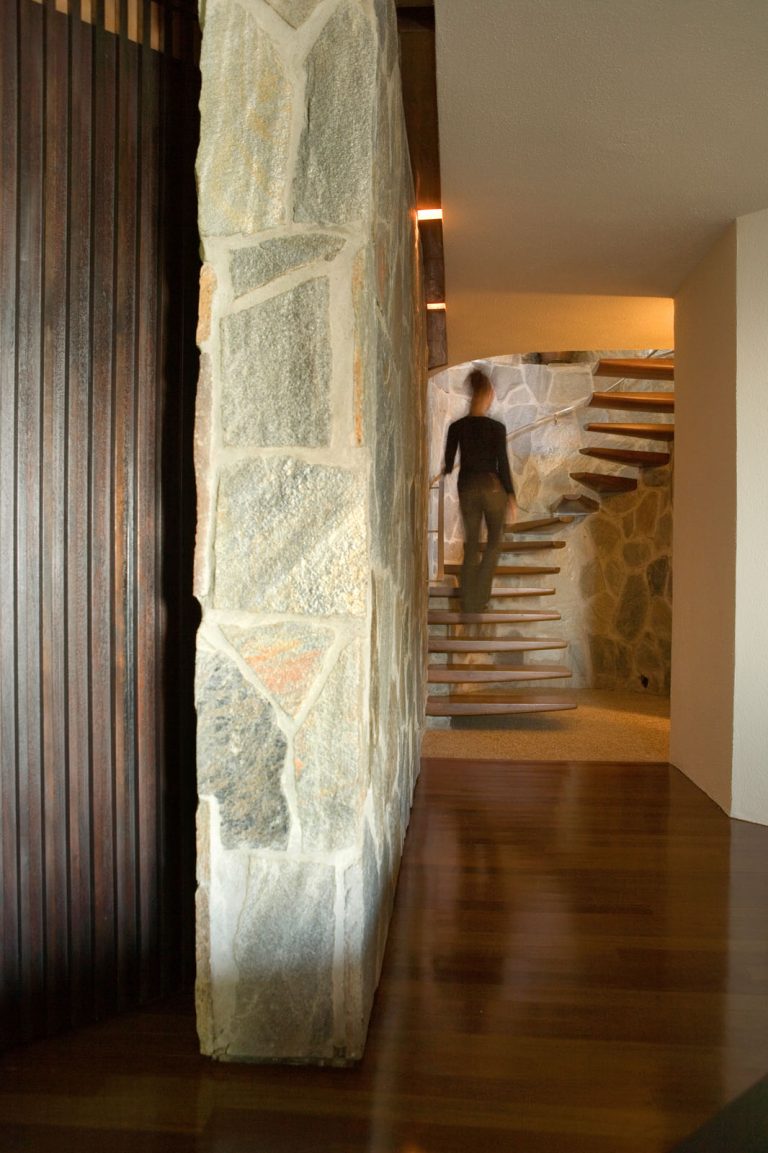
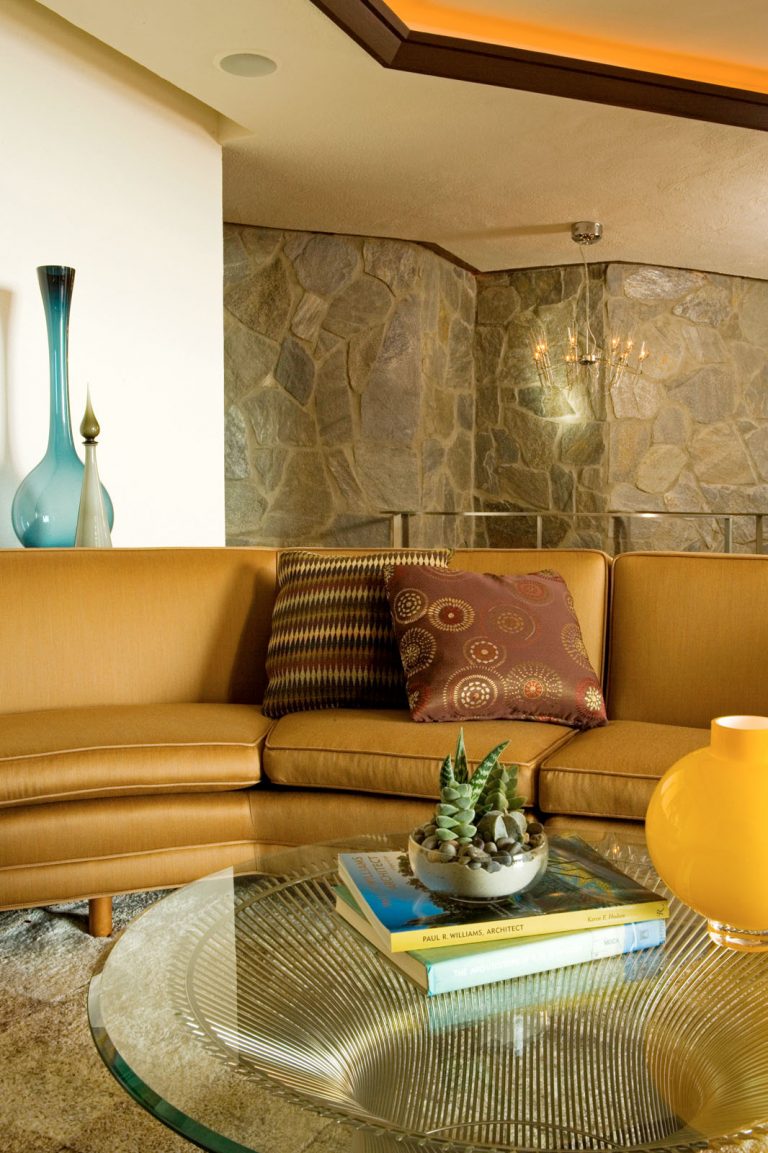
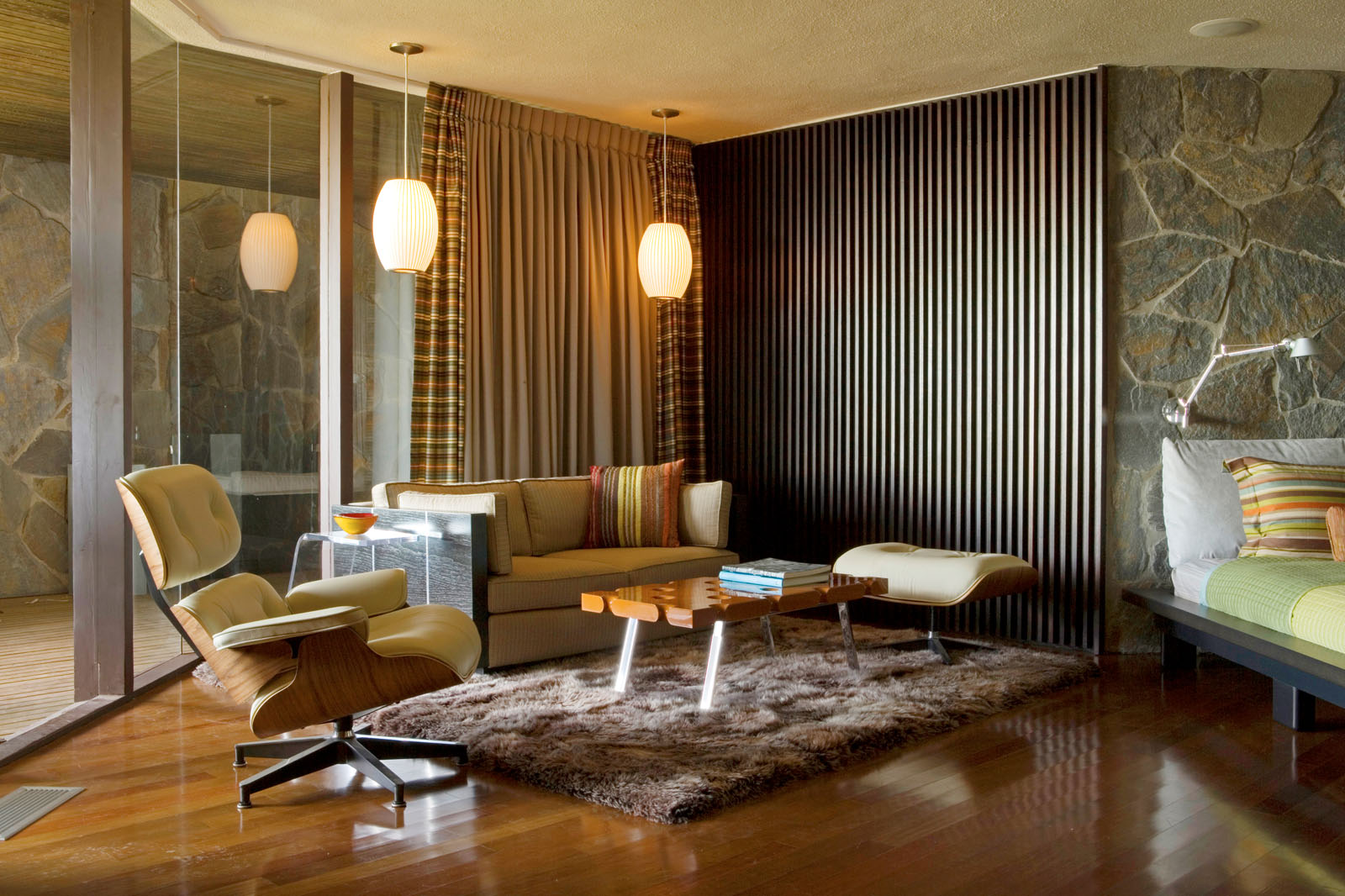
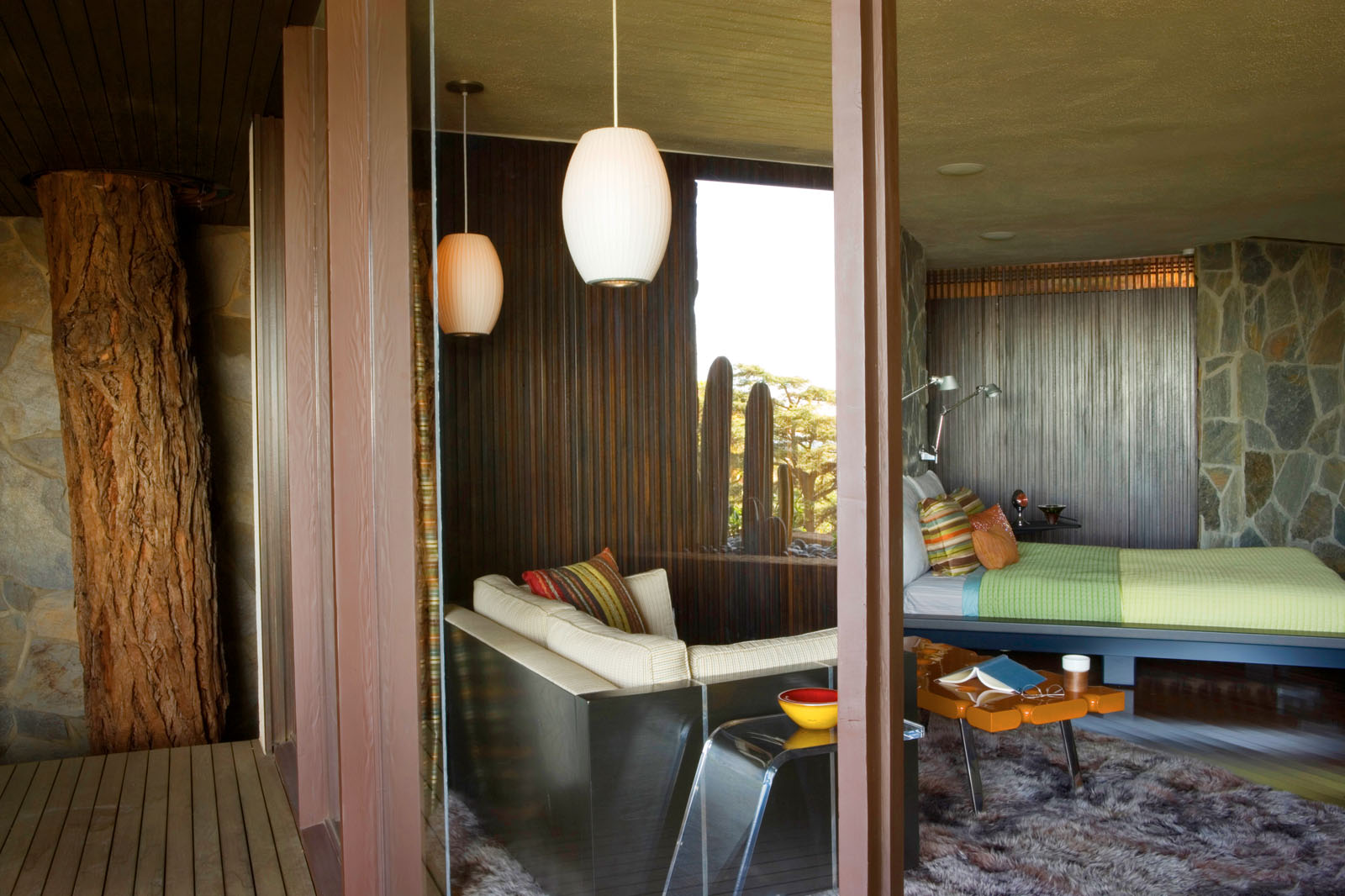
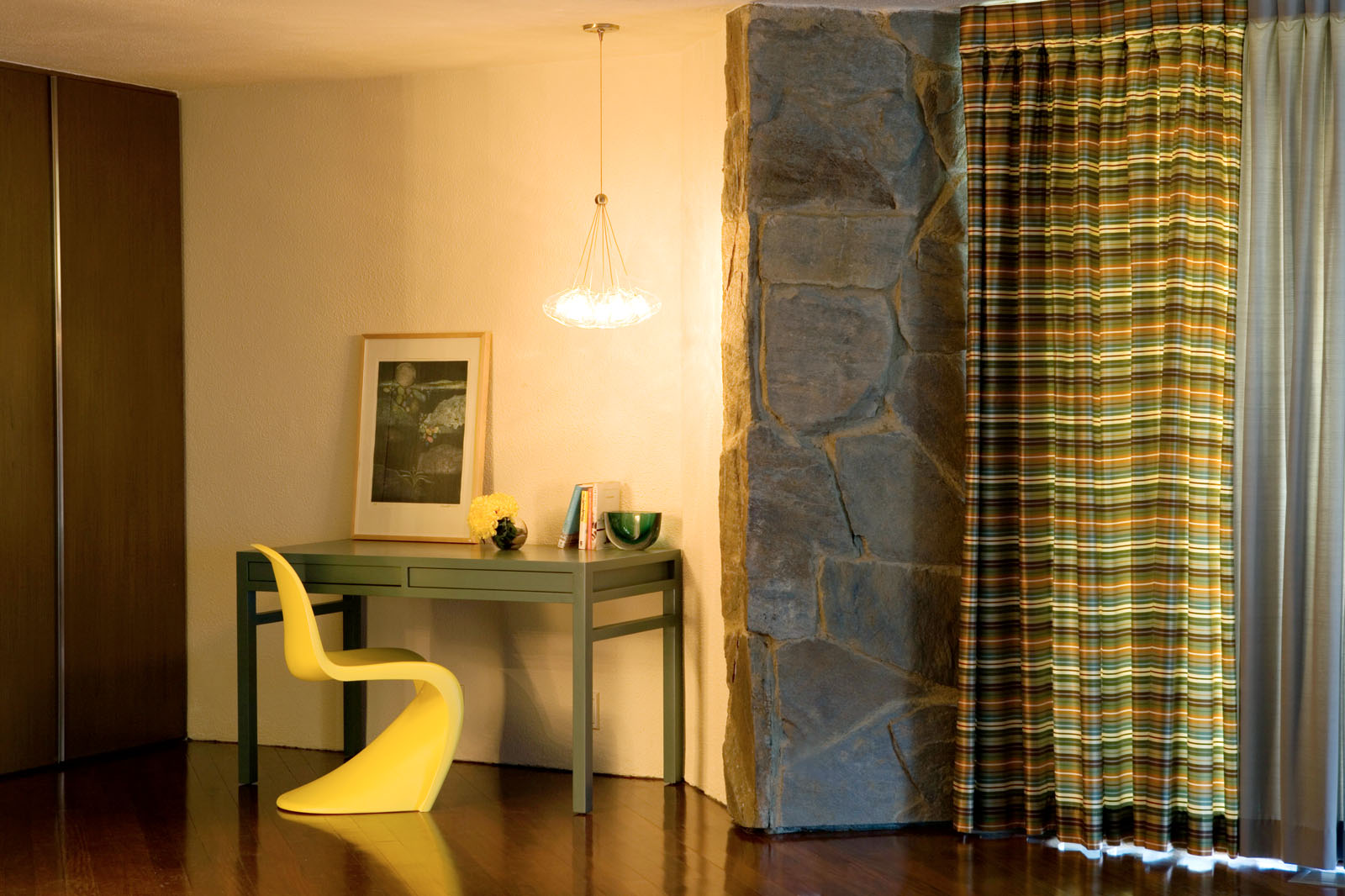
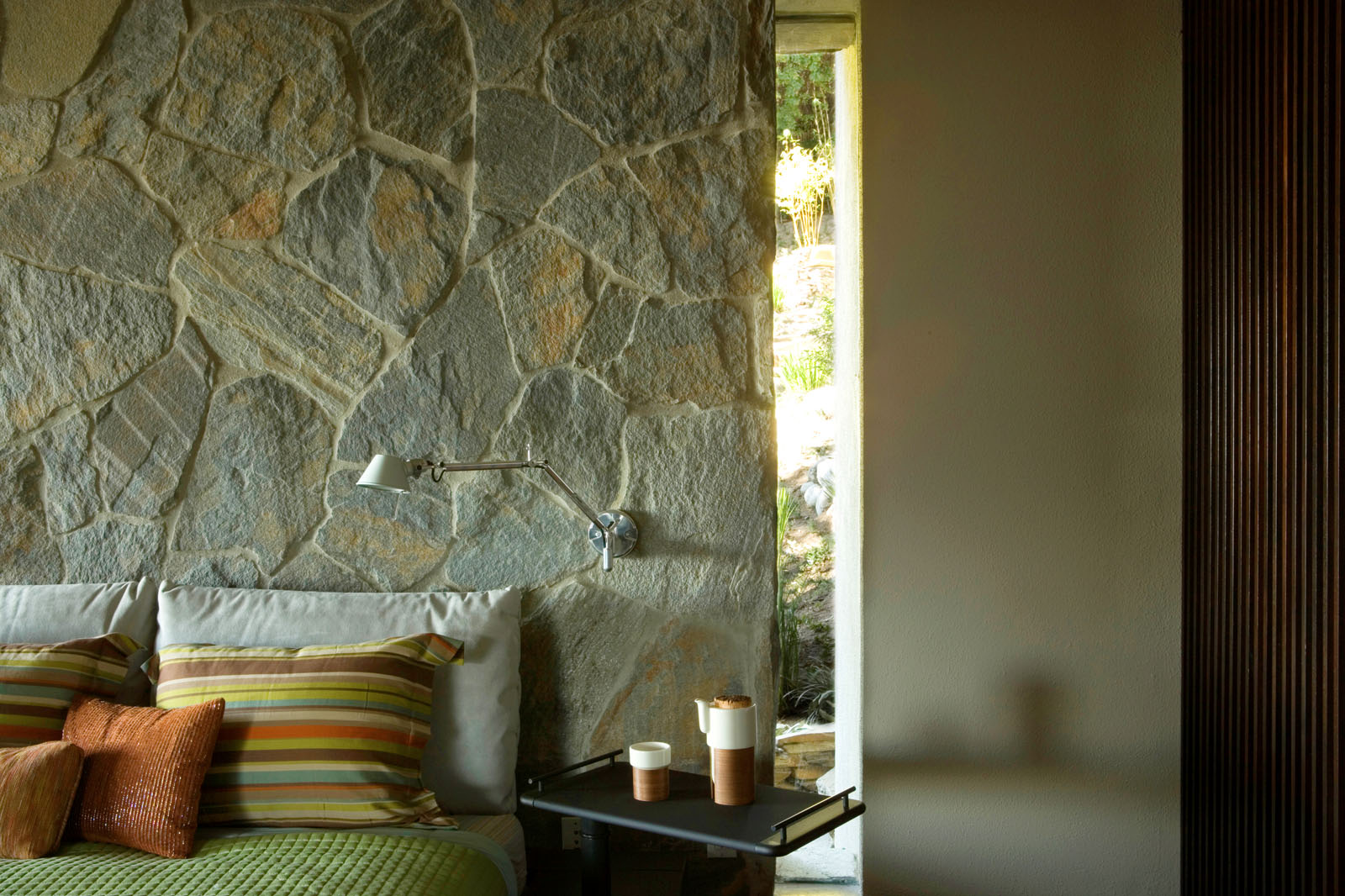
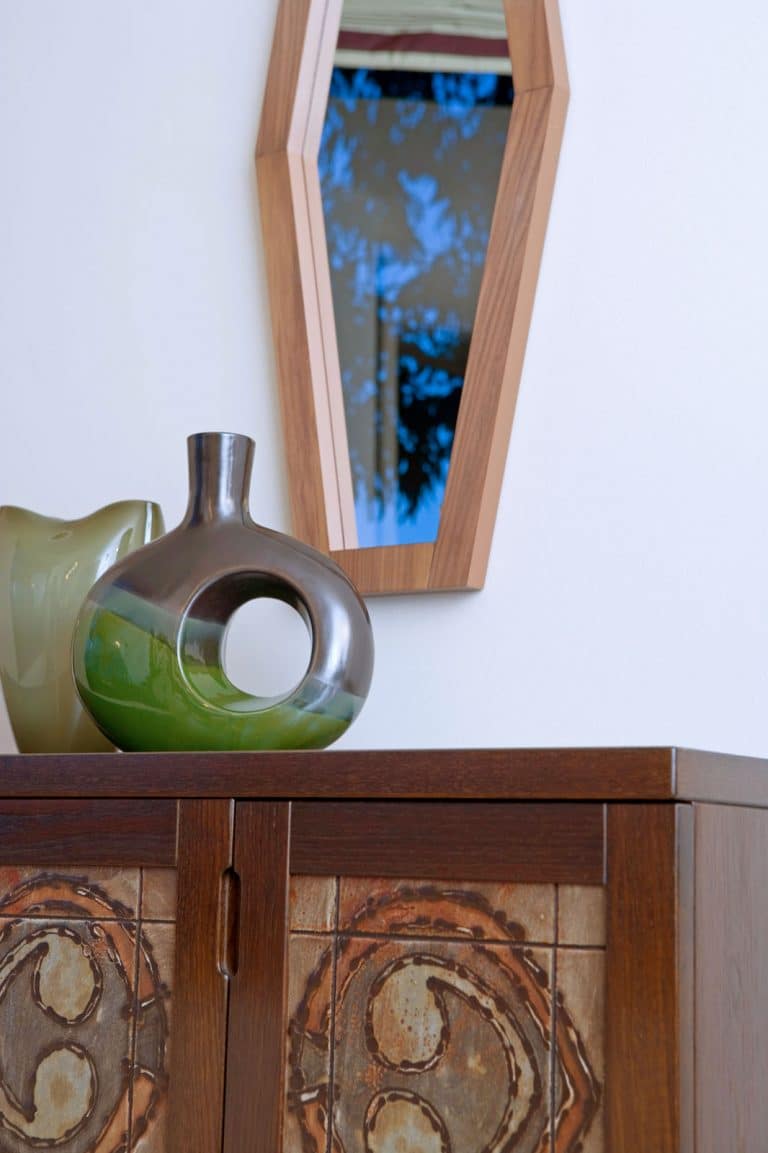
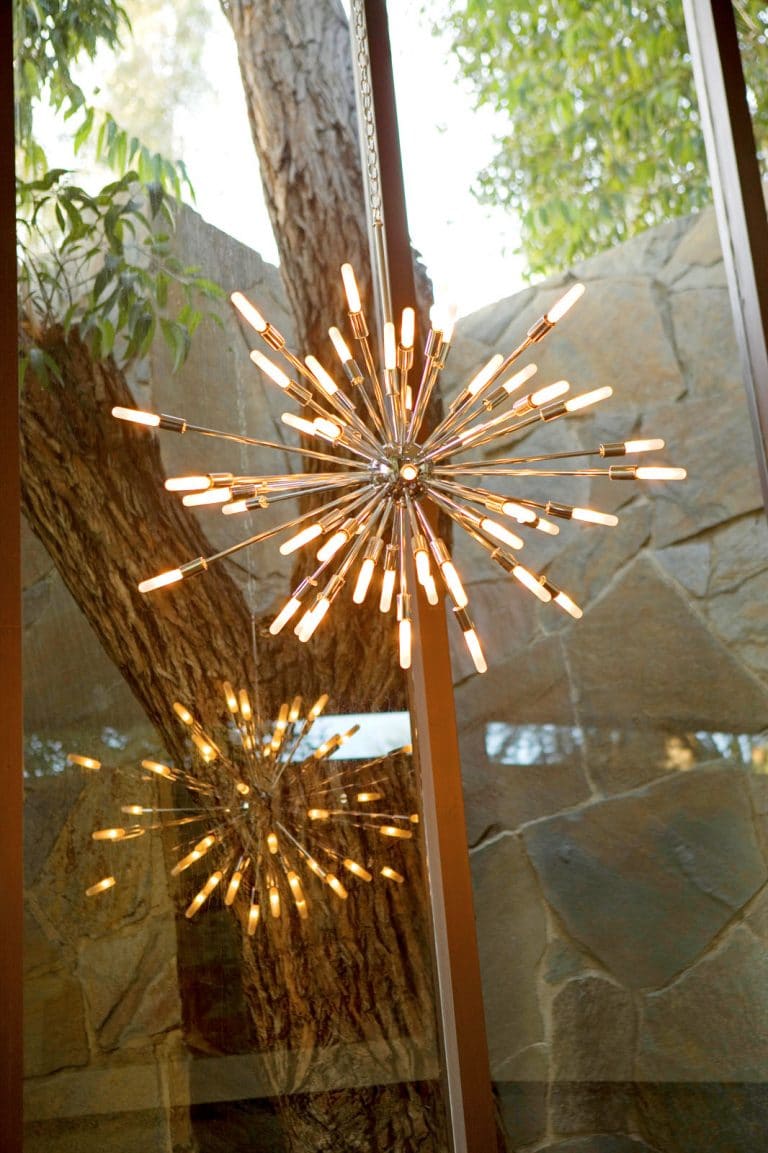
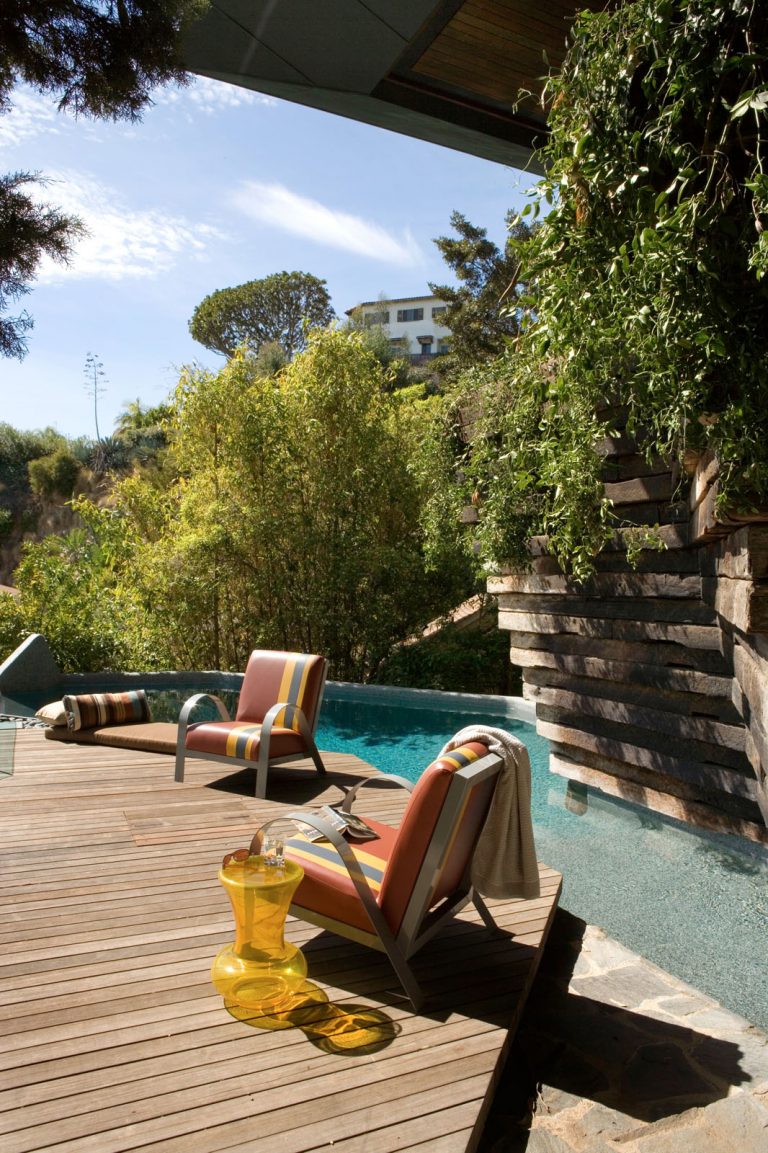
Raymond Kappe - Canna Road
Architect: Ray Kappe – 1967
Location: Brentwood, CA
Built by architect Ray Kappe, this Mid Century Modern home is a historical cultural masterpiece preserved by Kristin’s client who resided in this house for many years. Her client is somewhat of an iconic figure himself in the community of Los Angeles, highly-regarded for purchasing many architecturally significant homes that have fallen into disrepair and rescuing them from being torn down or remodeled away from their authenticity. He restores these homes to their original specification and registers them as historical monuments under the Mills Act. Kristin Kilmer designed the interiors of 6 of these monuments alongside her client and considers it one her greatest, most humbling privileges to work with such an inspiring individual, who in her opinion really embodies an often-overlooked area of sustainable design: historical preservation. It has been effortless co-creating with the client as he trusts the creative process and allows Kristin the freedom to really get inside the heads of the architect and client to bring out their vision while respecting the integrity of the structure and its surrounding environment.
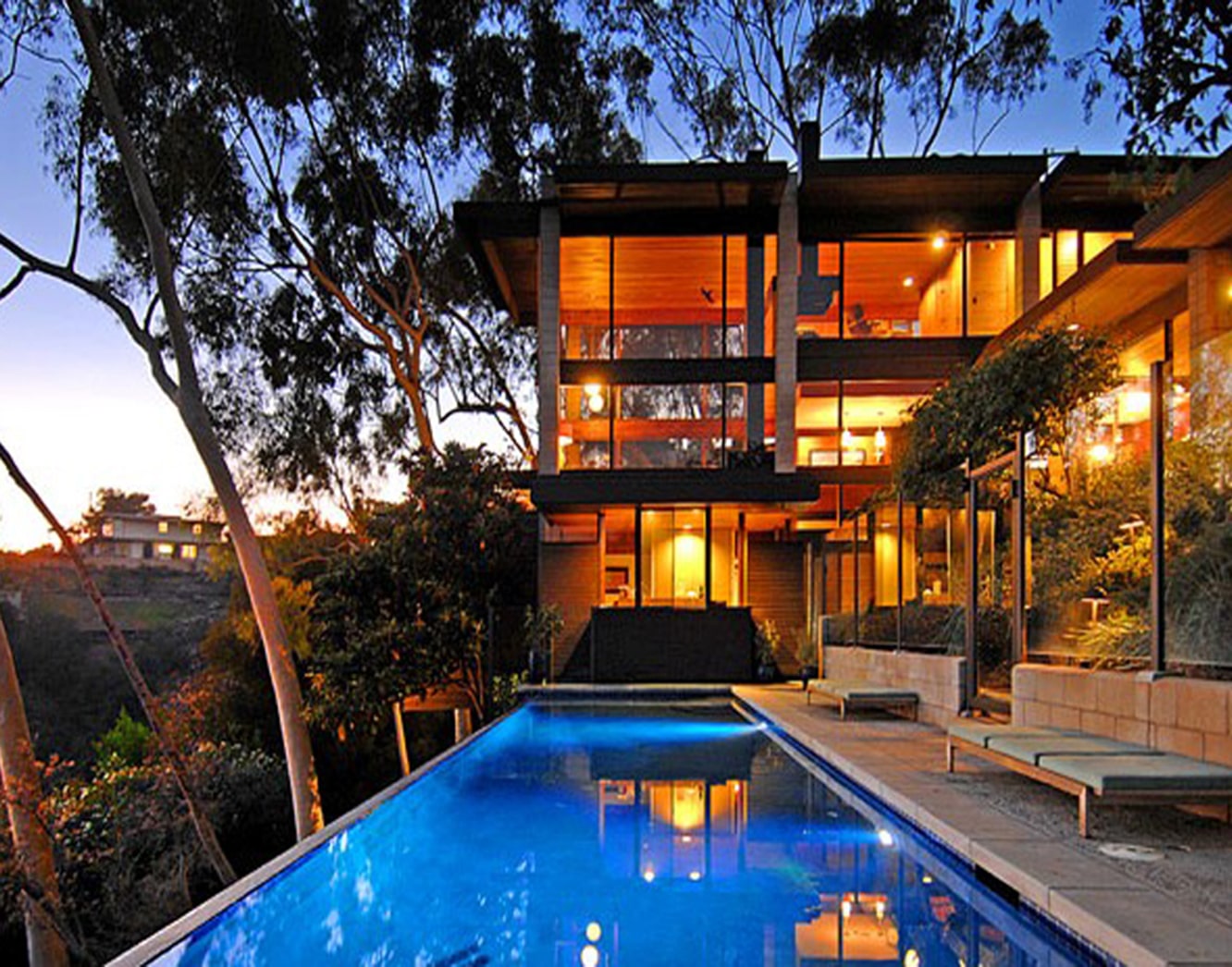
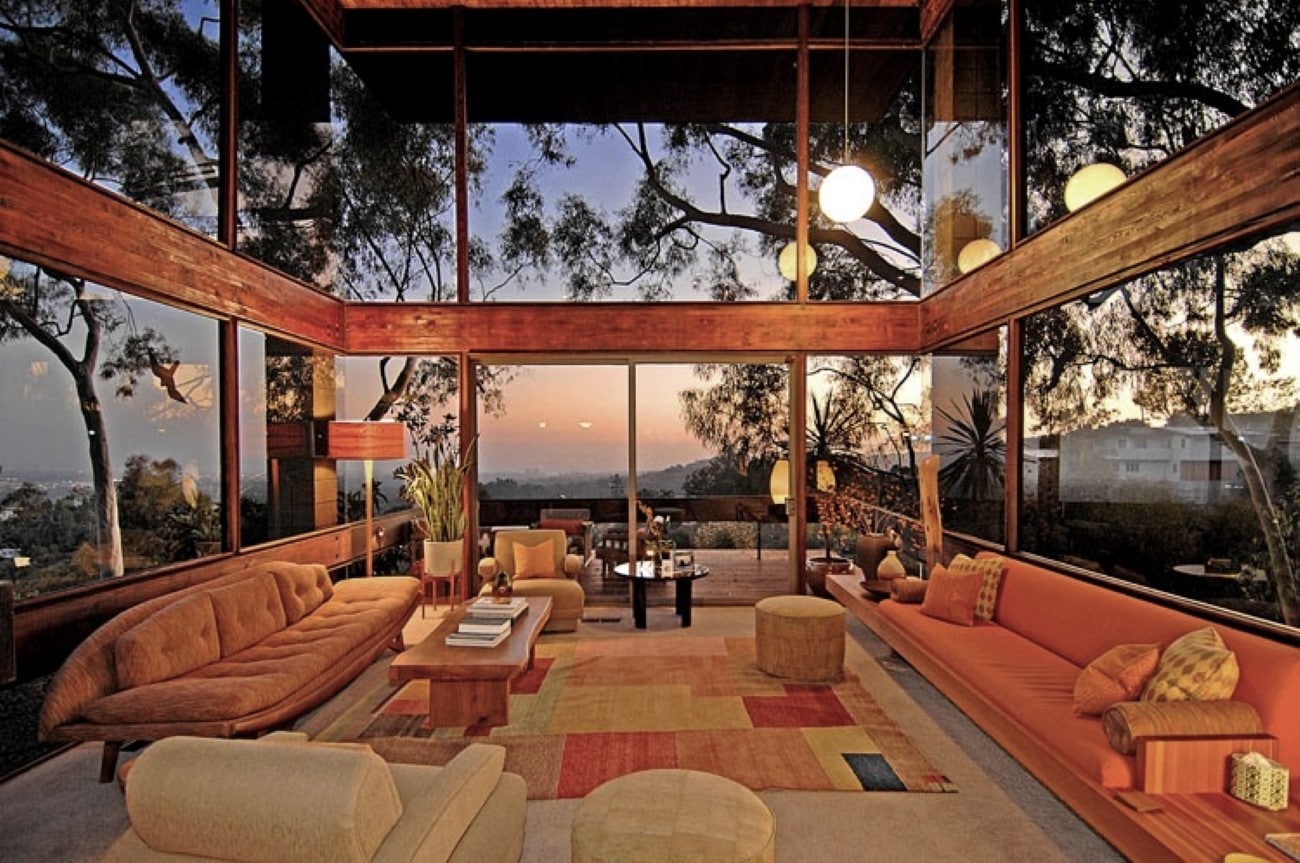
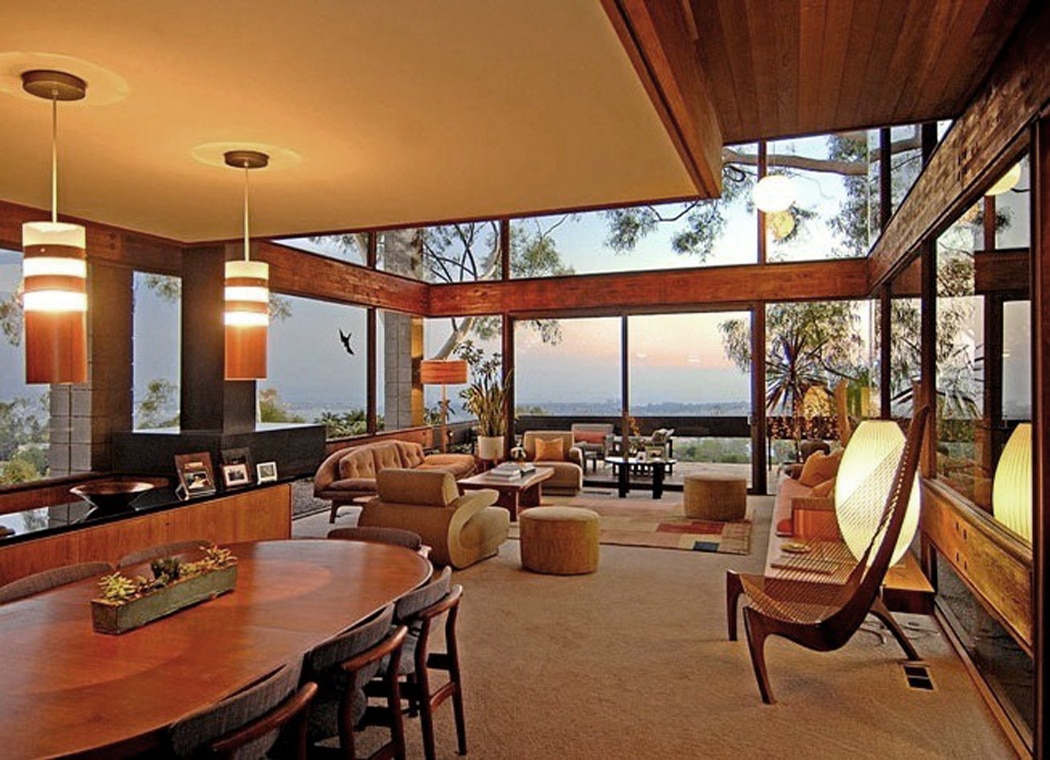
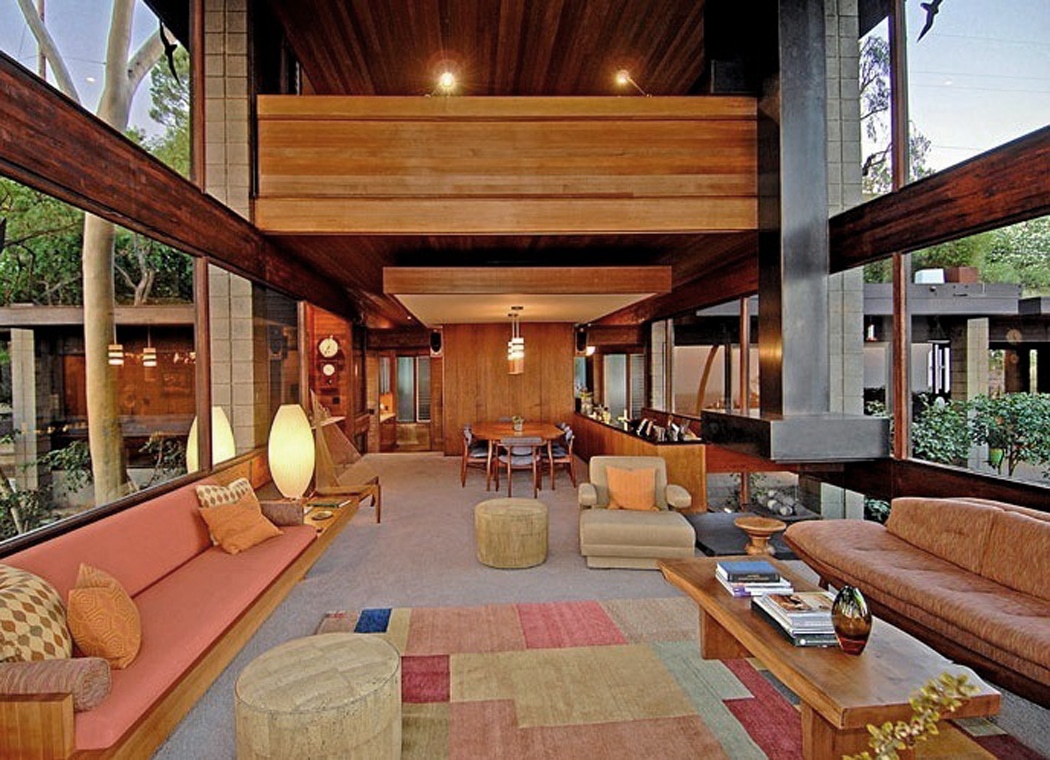

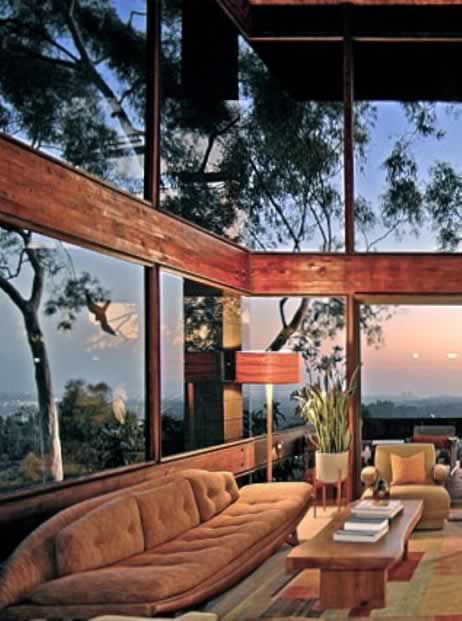
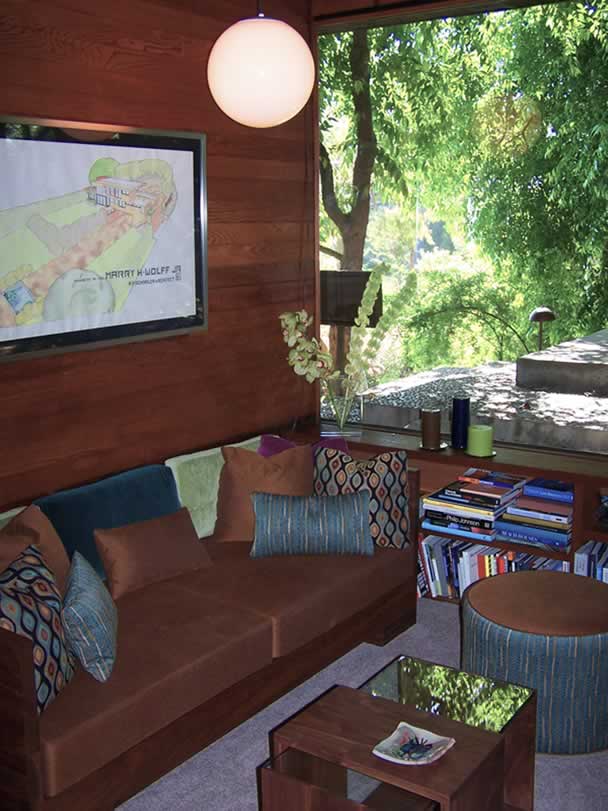
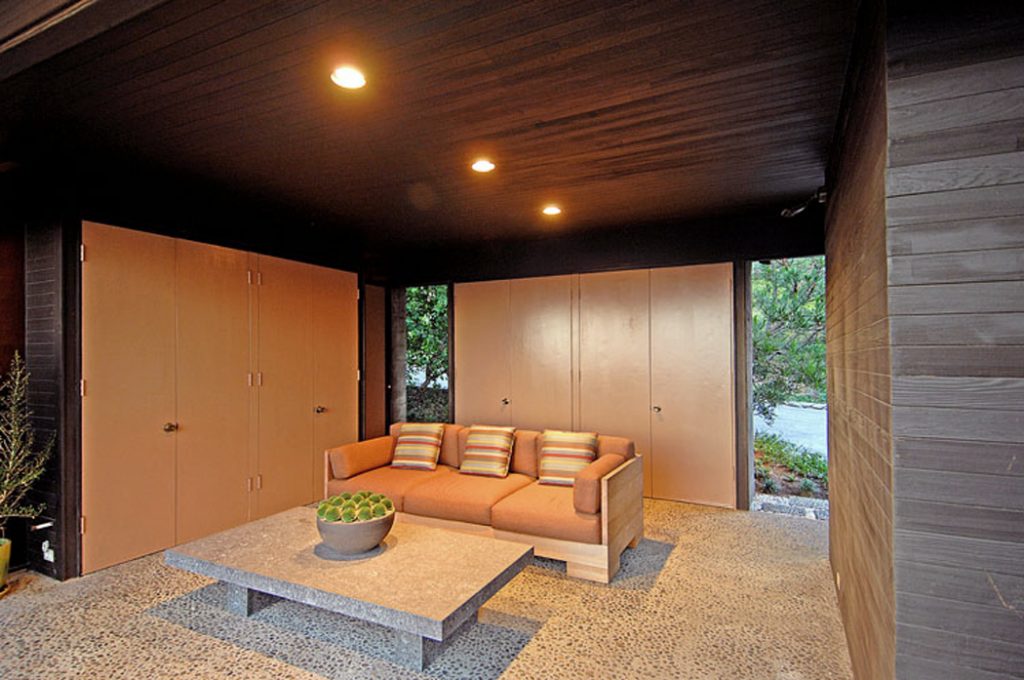
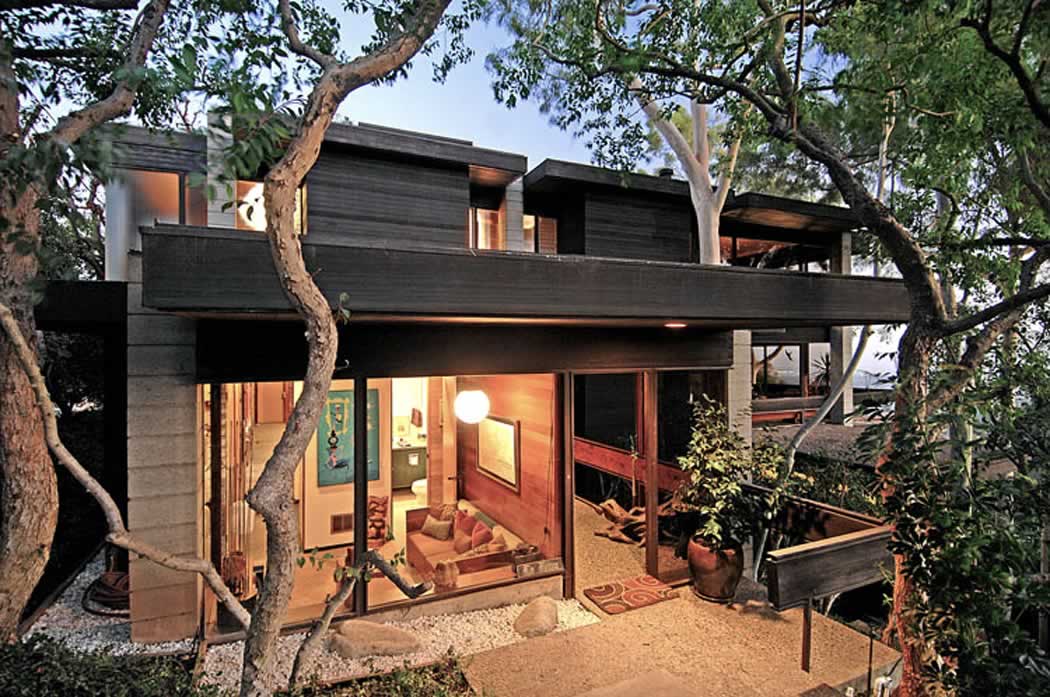

How House, Silver Ridge Ave.
Architect: Rudolph Schindler – 1925
Location: Silverlake, CA
This historical masterwork is considered to be RM Schindler’s greatest achievements because of the evolution of ideas it engendered, not only for the balance between the interior and exterior environments, but also for his revolutionary method of framing its magnificent structure. Schindler found that the standard system was not suitable for contemporary dwelling and developed the “Schindler Frame” by cutting off all studs though-out the house at door height to create a continuous visual and structural horizontal line. He embodied an ecological philosophy early on by eliminating expensive treated lumber in standard floor construction built up of beams and joists and incorporated tongue and groove planking instead. Kristin’s client heavily restored this house which was near deterioration and in spirit of the project, Kristin treated it as “Master Thesis” and studied the theory and practice behind the home extensively before designing 13 original furniture and lighting pieces and re-interpreting 6 Schindler originals. All pieces were designed on the same mathematical, architectural module and integrated many details from the home. For example, the dining tabletop’s edge features the same detail as the drip strip; molding running horizontally along the glass windowpanes. Kristin Kilmer has now updated these Schindler designs and offers all of these pieces in sustainable woods, fabrics, metals and eco-resins.
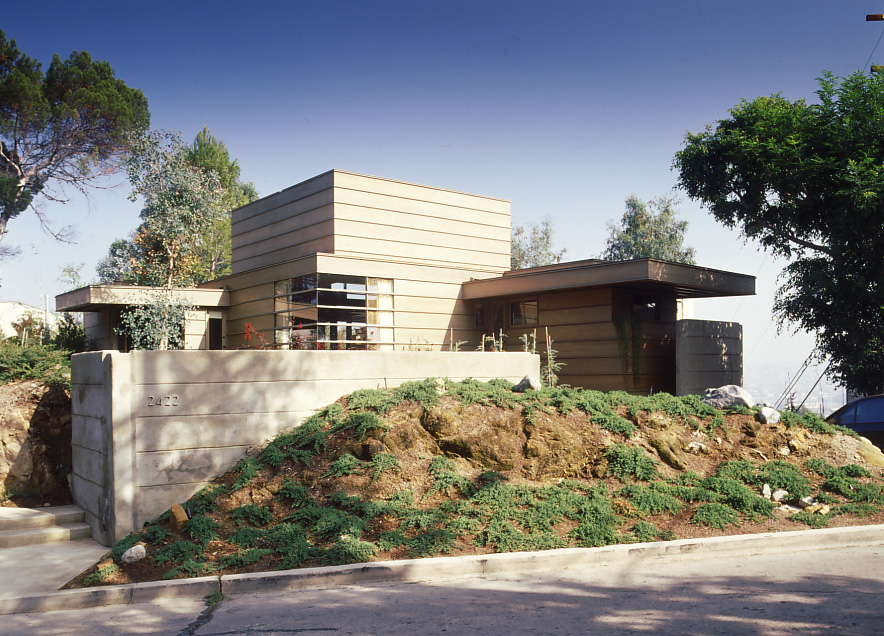
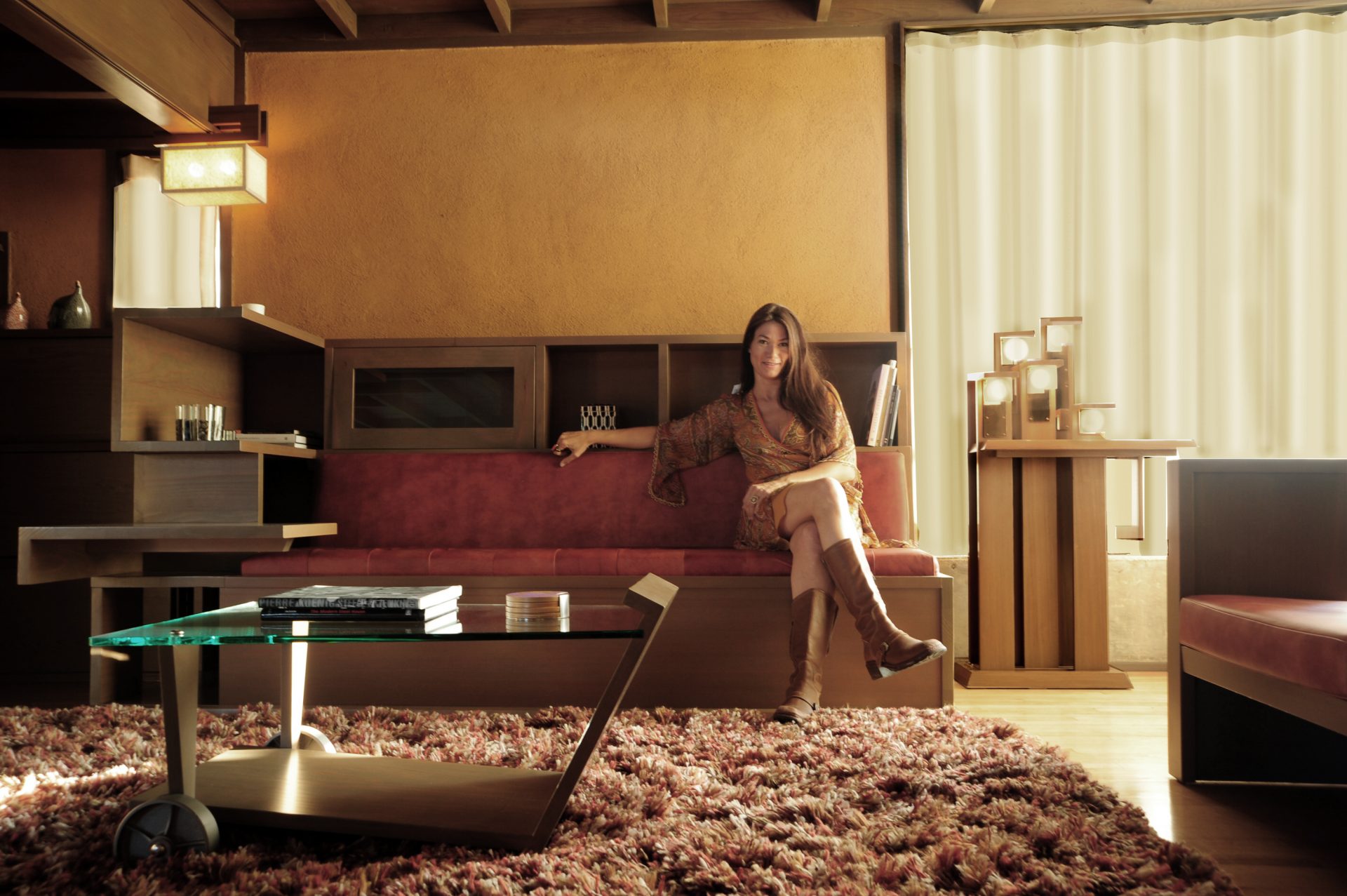
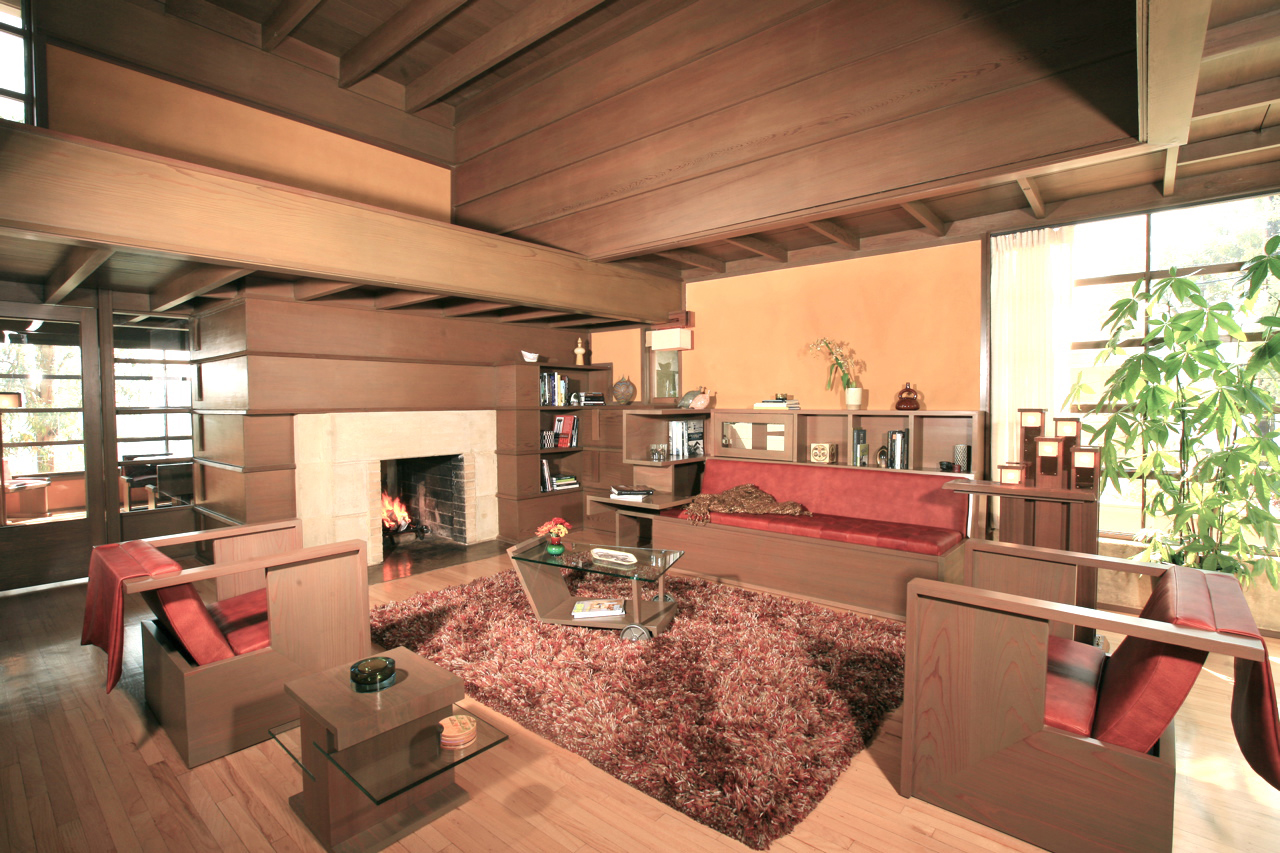
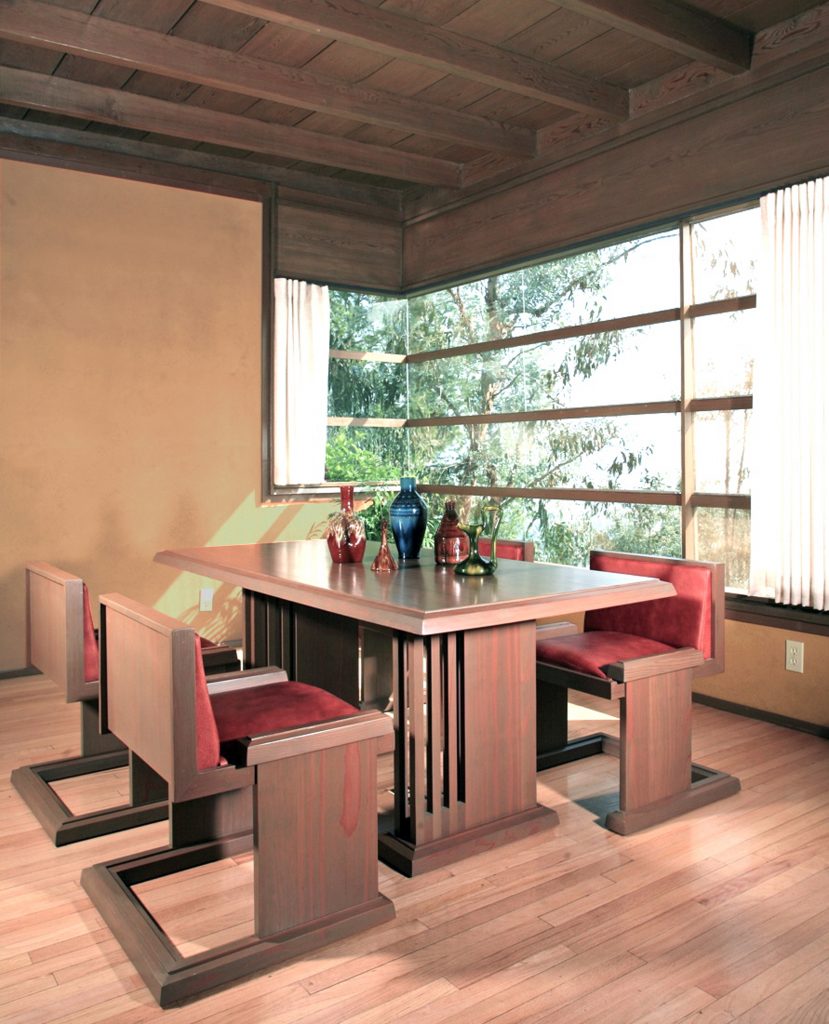

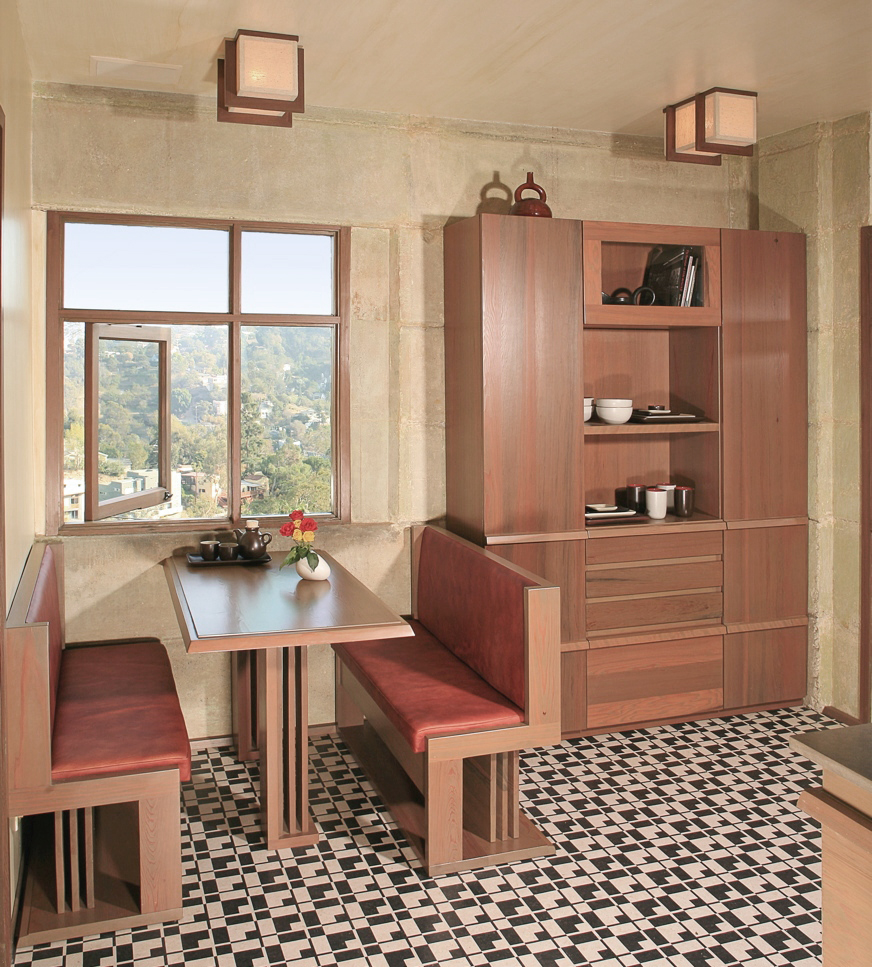
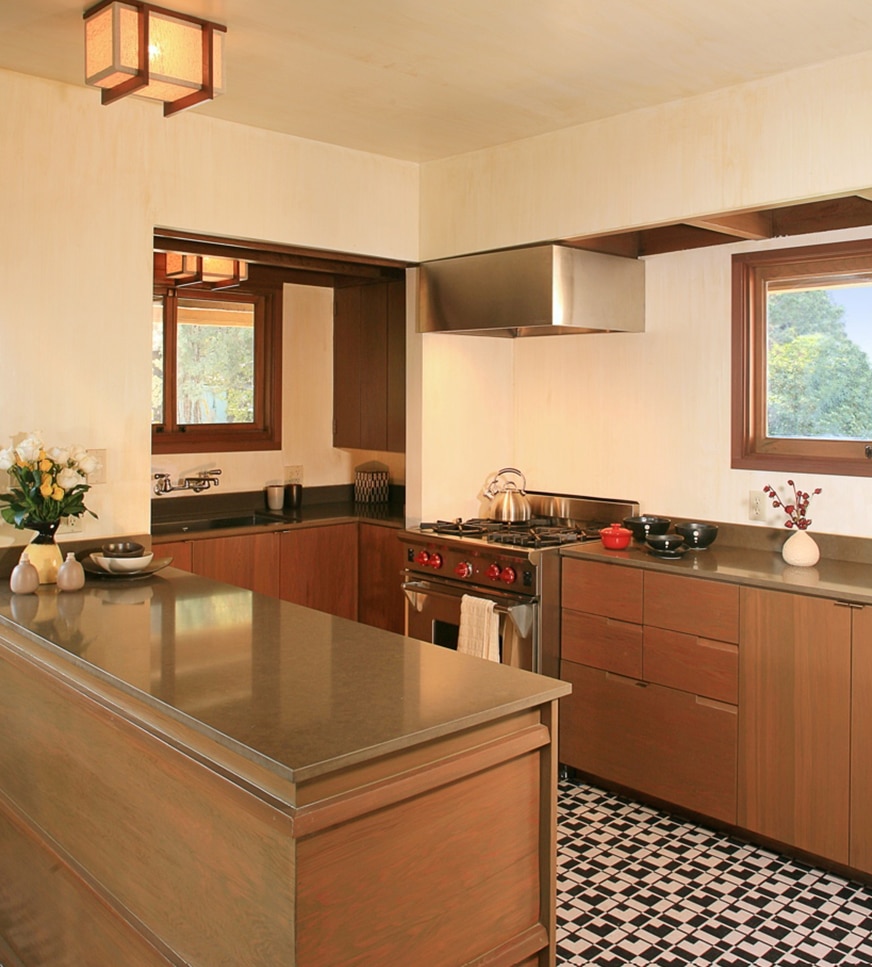

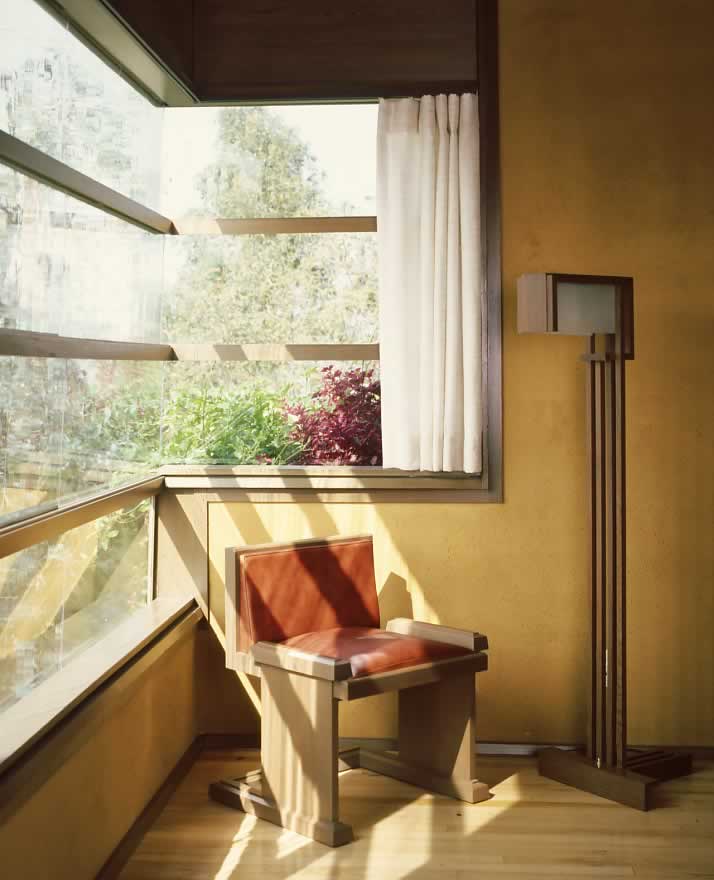

Steven’s House, Colony Drive
Architect: John Lautner – 1968
Location: Malibu, CA
Inspired by the ocean it faces, Architect John Lautner created this house with its curved shell to resemble a wave while the interior structure evokes a nautical, boat-like ambience in every room. On the practical side, it was built on concrete, which is critical for low-maintenance beach livingon the oceanfront. The client restored the interior structure and Kristin Kilmer designed built-in cabinetry in the spirit of the originals. She refurbished his authentic dining chairs, and added upholstery to all of the built-in banquettes for added comfort. Kristin also added Frank Lloyd Wright’s Taliesin lamp in honor of Lautner’s mentor and Taliesin, the place where he once studied, which is also in Kristin’s home state of Wisconsin. The custom modular sofa can be separated in to three sections, allowing the resident to move it around freely or reconfigure it. It also has shelving along the back for additional storage and can be placed in the middle of the room. These elements of modular design are also part of Kristin’s sustainable message as the piece has a longer lifespan. Additional components can be built and because of its flexibility, the sofa can be placed in different environments should the homeowner one day decide to move.
